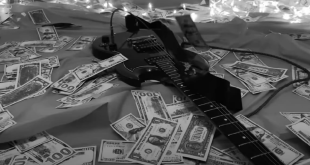In his book Sound Unbound, Paul D. Miller states, “everything must be about one thing first, then it can be about many things.” The ability to have one idea flourish into a plethora of different things is what makes adaptation so commendable, and also what can be held responsible for the current success of hip hop music. Hip hop, at its origin, is composed of four elements: rapping, scratching, break dancing, and graffiti; though today the evolution of hip hop music can be strongly attributed to the heavy use of sampling. By taking a piece from another song, artist, or even another genre, two elements are being combined and made into something new. The entire meaning of a piece of a song can be altered just by pairing it with something else—the ability to change meaning does not only exist from medium to medium, but can exist in one, like music. Hip hop artists have been, for years, bringing together different genres and adapting music to the changing times and demographics of our world. I want to take a look at how hip hop artists make connections with each other as no other musicians do, making a realm of their own within the music.
Sampling dates back to the late 1960’s, when experimental musicians would manipulate tape loops and vinyl records on phonographs. The use of sampling in hip hop music in the 1970’s is what popularized the technique, and also helped spread popularity for electronic music and DJs. Sampling was done with the manual manipulation of vinyl records, and DJs would use sampling as a way to show off their own record collection. Many historians argue that hip hop developed primarily as a form of collective resistance to oppression.
The connection between old school and new school hip hop is deeply rooted in newer era artist’s ability to not only sample and receive inspiration from their elder’s, but also recycle ideas. By sampling music from a well-cherished song, artist reach a level of nostalgia with their listeners, while also reaching another meaning within material that may not have been processed before. In J. Cole’s “LAnd Of The Snakes,” the instrumental intro of the song is something completely familiar as Cole comes in to spit, “this the shit I used to roll down Lewis Street with,” indicating the familiarity of the song to both the artist and the listener. The psychedelic, rubberized beat is that of Outkast’s “Da Art of Storytellin’” which not only gives the song a natural, friendly feel, but indicates that J. Cole, too, is about to tell a story of his own.
On of my favorite examples of music’s ability to adapt almost anything is in “A Gangsta’s Fairytale.” Ice Cube puts a comedic twist on English nursery rhymes and makes them more realistic in accordance to the childhoods being experienced by the kids in his neighborhood. The song begins with, “once upon a time, in the black part of the city,” and goes through a plethora of situations that will completely ruin the once-cherished bedtime stories of your youth. He plays on the idea of Jack and Jill, except instead of fetching a pail of water, they both end up with gonorrhea—“Jack and Jill ran up the hill to catch a lil nap, dumb bitch gave him the clap.” After that, he moves onto a story about the old woman who lived in a shoe, but this time, mimics the lives of women more familiar to him—“there he saw the lady who lived in a shoe sold dope out the front, but in back, marijuana grew.” While these situations are comical, it also provides insight into the types of environments impoverished, young black men were subject to growing up in and being robbed of their innocence. Ice Cube takes commonplace, beloved stories in order to get a message across, which truly evolves the way listeners will treat nursery rhymes and fairytales. With his ability to completely twist the angle of established childhood stories and turn attention to issues in his community, Ice Cube completely adapted nursery rhymes into something much more.
Kanye West is notorious for his masterful use of sampling, and his song “Homecoming” might be one of the most famous examples of paying homage to a fellow rapper. West’s masterpiece is a mirror of Common’s beloved song “I Used to Love H.E.R.” Both songs open with the lines “I met this girl when I was __ years old, and what I loved most she had so much soul.” By Kanye opening his song with the same lines as Common’s prominent masterpiece, it indicates to listeners that it is an homage, while the subject matter of both songs is different. Throughout the entirety of both songs, it seems obvious that the artists are talking about a girl that they adore, however both are—as revealed at the end of the song—talking respectively about Chicago and Hip Hop. Common broke barriers by taking the over-played yet foolproof formula of love songs, and using it as an extended metaphor to talk about how he misses the days of “original, pure, untampered” hip hop, or Hip hop in it’s Essence and Real (H.E.R.) Mr. West takes that same style into “Homecoming,” by spilling his heart out for a girl named Wendy, soon revealed to be Chicago, or, the Windy City.
Though sampling is commonly thought of as a cop-out, or simply re-using old ideas in a way that is mundane or unclever, I find the opposite to be true. I find nothing more exciting than listening to something new and experiencing some lovely deja vu due to a call back to one of my favorite tunes. Sampling creates a world within hip hop that only those who are informed can indulge, and adds another dimension to the already incredible music listening experience.
 Music Existence Because of Music, We Exist
Music Existence Because of Music, We Exist




